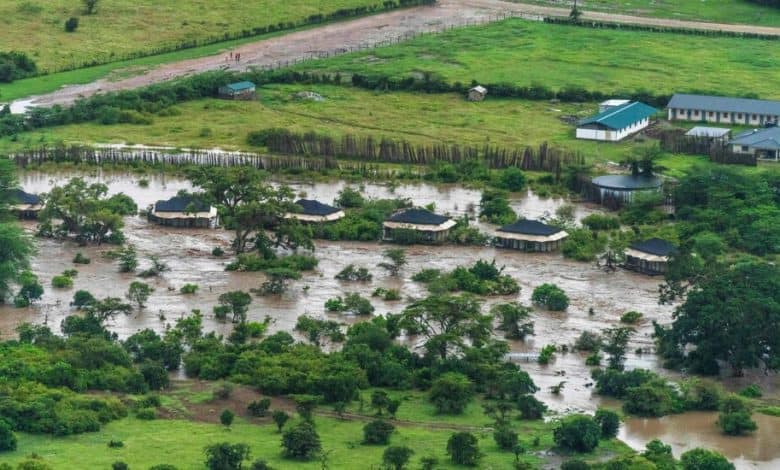Flooding in a Kenyan Natural Reserve Forces Tourist Evacuation

Devastating floods that have killed hundreds of people and displaced tens of thousands more in East Africa are now inundating parts of the Masai Mara, one of Africa’s greatest wildlife national reserves.
On Wednesday, the Telek River broke its banks and overflowed into parts of the natural reserve, flooding many tourist camps. A spokesman for the Kenyan Red Cross, Munir Ahmed, said that more than 90 people have been evacuated, some by helicopter. Others fled through the water.
“The situation in Masai Mara is so bad,” said Daniel Ikayo, the owner of a safari company that operates there. “There is water everywhere.”
The floods in the reserve have added to the heavy damage to key economic resources in Kenya, including livestock, crops and infrastructure.
“We are seeing a disaster unfold,” said Bryan Adkins, who heads a trust that helps protect the Kijabe forest, which has also been decimated by the floods.
Only part of Masai Mara has been affected, said Mohammed Hersi, director of a safari company and the former chairman of the Kenya tourism federation. But Alfred Mutua, the country’s tourism minister, warned on Wednesday that all hotels and camps near rivers and within national parks and reserves should prepare for potential evacuation in case rivers overflow.
Kenya’s long rainy season, in the spring, is not a prime time for tourism, but those who are there now have found their plans overturned. “People don’t want to come here to drive around in a lake,” Mr. Adkins said.
The Telek River lies across the “Great Migration” route from the Serengeti in Tanzania to the Masai Mara, and from July to October, over a million wildebeests and zebras cross over — an event that attracts thousands of tourists from all over the world.
On Monday, flash floods sent a deluge of muddy water over an area in the Rift Valley region in southern Kenya, killing at least 45 people, sweeping away houses and damaging roads. In total, 179 people have died in Kenya since the flooding begun, and many more have been killed across the whole of East Africa. The floods were particularly deadly in neighboring Tanzania.
With the rains expected to continue, Kenya’s presidential office on Wednesday issued an evacuation order to people residing in risk areas — near, for instance, rivers, dams and reservoirs — to evacuate within 48 hours. Over 30,000 people have already been displaced.
Mr. Ahmed, of the Red Cross, said that in total, 45 roads and over 370 water sources had been destroyed, and over 600 businesses and 35,000 acres of crops affected. People who lived off small businesses, like avocado farms or tractor businesses, lost their livelihoods, local residents said.
What the final economic impact of this year’s inundations might be is unclear, but according to a recent report by the African Climate Foundation, climate change-related events like floods and droughts led to losses of 3 to 5 percent of the country’s GDP from 2010 to 2020.
According to the report, the frequency and intensity of such events is likely to increase.
Forecasters with the Kenya meteorological department warned on Wednesday about “a surge in rainfall intensity across multiple regions of the country from Thursday through the weekend.”
Judson Jones contributed reporting from New York.
